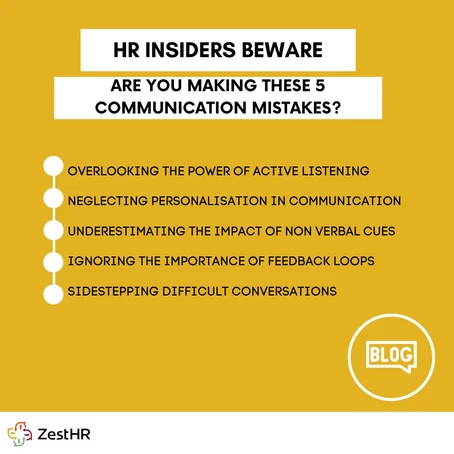
In the rapidly evolving world of HR, effective communication isn’t just a skill—it’s a mandatory requirement. Yet, even the most seasoned HR professionals can make certain mistakes that turn manageable situations into dramatic events. We’ve identified five communication faux pas that can undermine your efforts and how to avoid them.
Overlooking the Power of Active Listening
The Issue: Too often, HR professionals get so caught up in conveying their message that they forget the importance of active listening. This isn’t just about hearing words; it’s about understanding context, emotions, and underlying concerns.
The Fix: Practice active listening by giving your full attention, acknowledging feelings, and asking clarifying questions. This approach not only provides valuable insights but also builds trust and respect.
Neglecting Personalisation in Communication
The Issue: In an era of mass emails and generic policy updates, losing the personal touch in communication can make employees feel like just another number.
The Fix: Tailor your communication. Acknowledge individual achievements, address concerns directly, and make your interactions as personal and relevant as possible. Personalisation shows respect and appreciation for each team member’s unique contribution.
Underestimating the Impact of Non-Verbal Cues
The Issue: Communication isn’t just about words. Non-verbal cues like body language, eye contact, and tone of voice play a massive role in how your message is received.
The Fix: Be mindful of your non-verbal signals. Ensure your body language and tone match your message’s intent, creating an open and engaging communication environment.
Ignoring the Importance of Feedback Loops
The Issue: Communication is a two-way street. Failing to establish effective feedback mechanisms can lead to misunderstandings and a feeling of voicelessness among employees.
The Fix: Create and maintain robust feedback channels. Encourage and act on feedback to demonstrate that you value employees’ input and are committed to continuous improvement.
Sidestepping Difficult Conversations
The Issue: Avoiding tough discussions about performance, behaviour, or layoffs can lead to confusion and mistrust.
The Fix: Approach difficult conversations with honesty, empathy, and clarity. Prepare thoroughly, provide specific feedback, and focus on solutions rather than problems.
Steering clear of these communication mistakes requires mindful practice, genuine empathy, and a commitment to continuous improvement. Remember, in HR, how you convey your message can be just as crucial as the message itself. By refining your communication strategies, you can foster a more engaged, productive, and positive workplace culture.